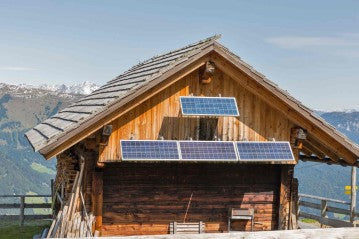
As solar energy continues to gain popularity as a sustainable and cost-effective alternative to traditional power sources, many individuals are considering investing in solar power systems for their homes or businesses. A key component of any solar energy system is the solar inverter, which converts the direct current (DC) electricity produced by solar panels into alternating current (AC) electricity that can be used to power our homes and appliances. One common question that arises is whether a solar inverter requires separate wiring or if it can be connected to the main electrical line. In this article, we will explore this topic and provide insights into wiring requirements for solar inverters.
1. Does the Inverter Need Separate Wiring?
Solar inverters generally require separate wiring to ensure safety and optimal performance. This separation is primarily due to the differences in electrical characteristics between solar panels and the main electrical grid. Solar panels produce DC electricity, which is typically at a lower voltage and requires specialized wiring to handle the direct current. On the other hand, the main electrical grid supplies AC electricity at higher voltages. To bridge this gap, the solar inverter acts as an intermediary, converting the DC electricity from the solar panels into AC electricity that matches the grid's voltage and frequency. Therefore, separate wiring is necessary to connect the solar panels to the inverter and then connect the inverter to the main electrical line.
2. Can We Connect the Inverter to the Main Line?
While solar inverters require separate wiring, they can be connected to the main electrical line through proper installation techniques. It is crucial to consult a qualified electrician experienced in solar energy systems to ensure a safe and compliant connection. The electrician will assess the electrical capacity of your home or business and determine the appropriate setup for connecting the inverter to the main line. This process involves installing a dedicated circuit breaker for the solar inverter and connecting it to an appropriate junction box or electrical panel.
2.1 Do You Need an Electrician to Install an Inverter?
Yes, it is highly recommended to hire a licensed electrician with expertise in solar energy systems to install a solar inverter. Electrical work, especially when dealing with solar power, should be performed by trained professionals to ensure compliance with local regulations, safety standards, and optimal system performance. The electrician will handle the wiring, connections, and other technical aspects of the installation, minimizing the risk of electrical hazards and ensuring the longevity of your solar energy system.
3. Which Size Wire Is Used for an Inverter?

The size of the wire used for connecting the solar inverter depends on various factors, including the inverter's power capacity, the distance between the inverter and the solar panels, and the local electrical codes. Generally, larger inverters require thicker wires to handle the higher currents involved. It is essential to consult an electrician or refer to the manufacturer's specifications to determine the appropriate wire size for your specific inverter.
3.1 What Size Wire Should I Use for a 1000 Watt Inverter?
For a 1000-watt inverter, a commonly used wire size is 10 AWG (American Wire Gauge) for distances up to 15 feet. However, if the distance exceeds 15 feet, it is advisable to use a thicker wire, such as 8 AWG, to minimize power loss due to voltage drop.
3.2 What Size Wire Do I Need for a 3000 Watt Inverter?
A 3000-watt inverter typically requires a larger wire size to accommodate the higher current flow. A 4 AWG wire is often recommended for distances up to 15 feet, while a 2 AWG wire may be suitable for longer distances, again to minimize voltage drop.
3.3 How to Wire a 5000 Watt Inverter?
A 5000-watt inverter necessitates a heavier gauge wire to handle the increased power capacity. It is advisable to use a 2 AWG wire for distances up to 15 feet, and for longer distances, a 1/0 AWG or even larger wire may be required to maintain optimal system performance.
4. Finally
When considering the installation of a solar inverter, it is crucial to recognize the need for separate wiring. The specialized wiring ensures the safe and efficient transfer of power between the solar panels, the inverter, and the main electrical line. Always consult with a qualified electrician who can assess your specific requirements and comply with local regulations. By investing in proper wiring and professional installation, you can maximize the benefits of your solar energy system, ultimately reducing your carbon footprint and energy costs while contributing to a sustainable future.
In conclusion, the use of separate wiring for solar inverters is necessary to bridge the gap between DC power generated by solar panels and the AC power supplied by the main electrical grid. Hiring a licensed electrician and using appropriate wire sizes ensures safe and efficient operation of your solar energy system.

0 Kommentare